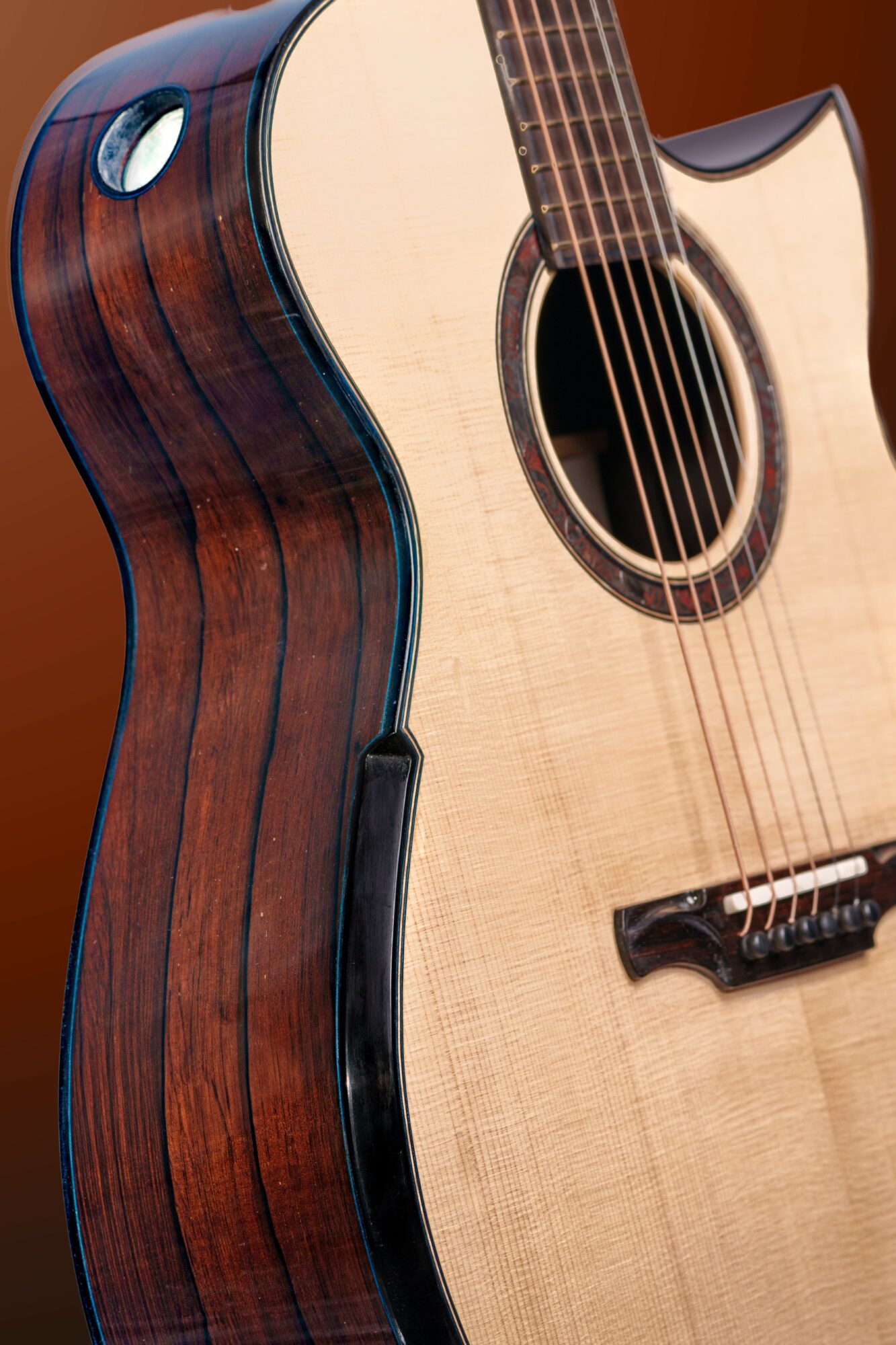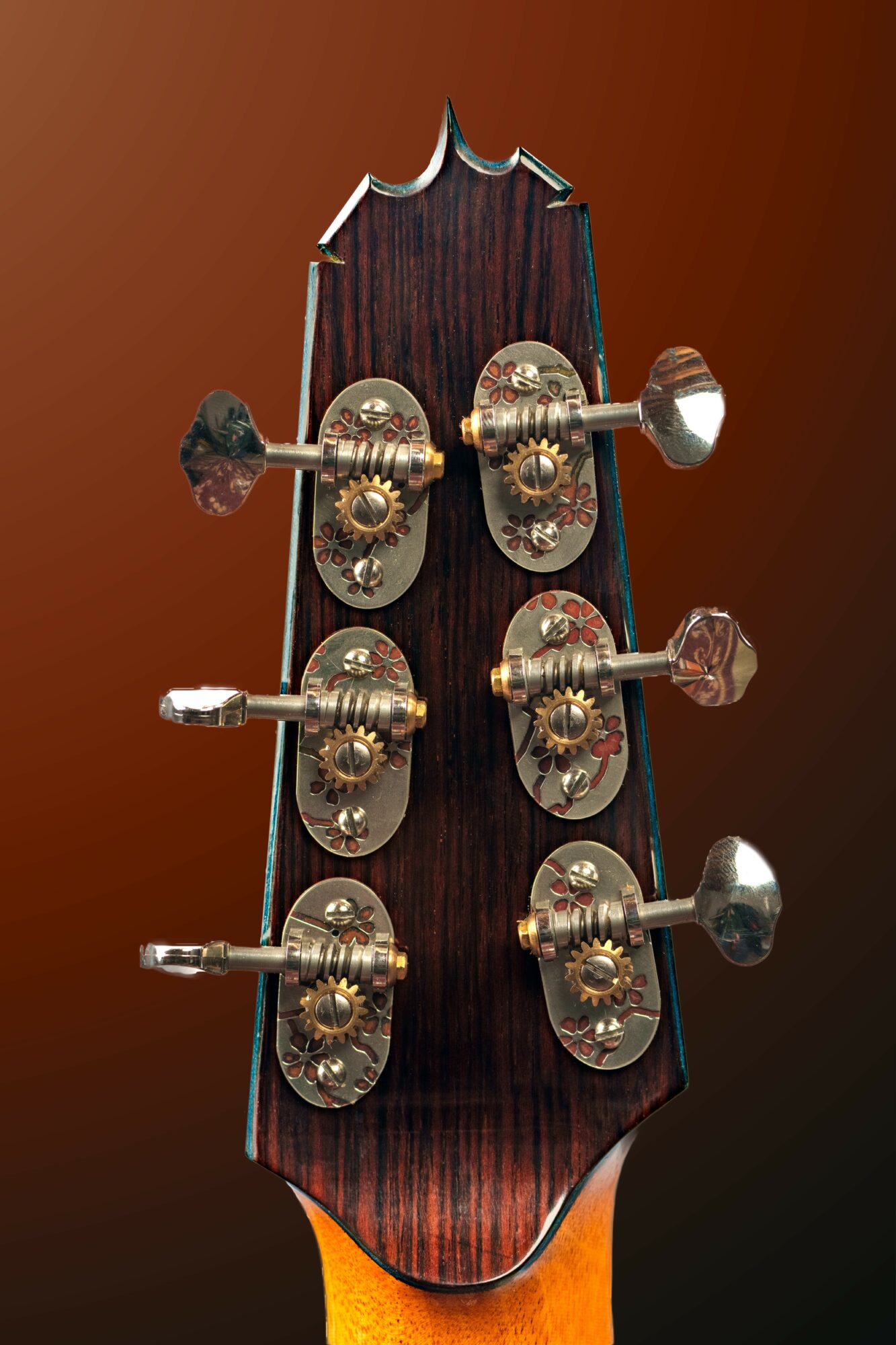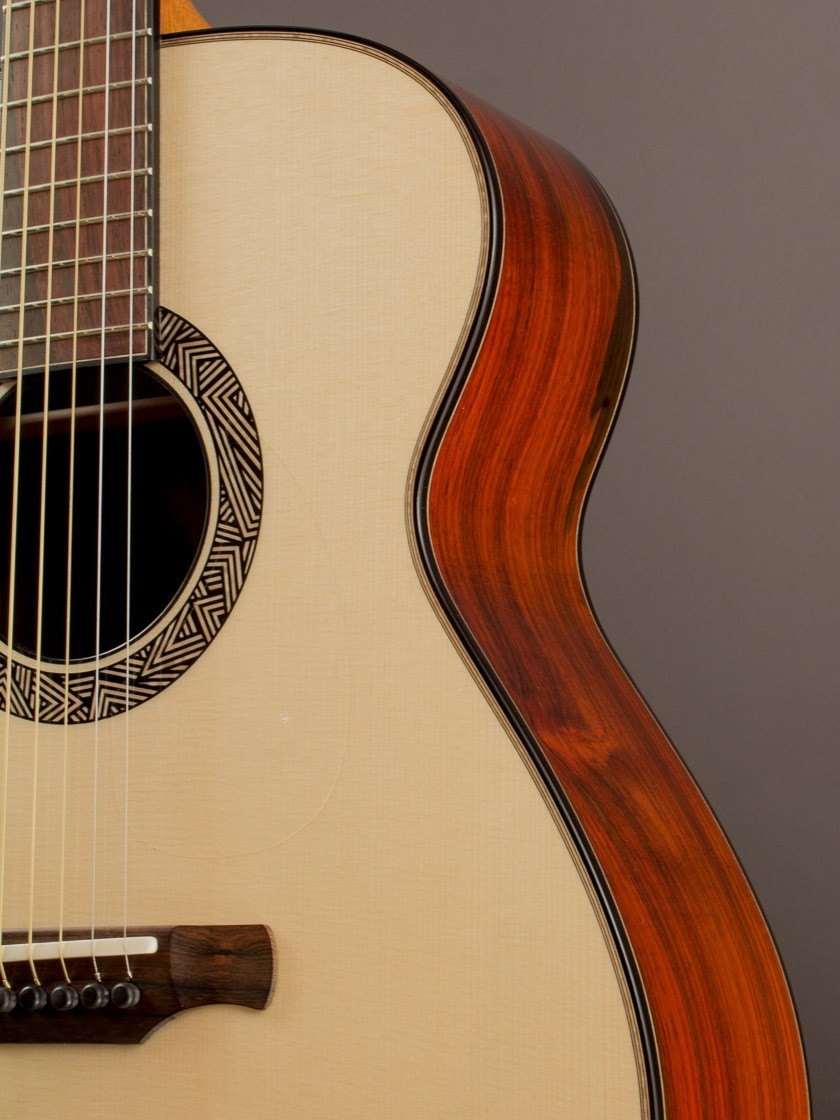

Today we’d like to introduce you to Sam Guidry.
Hi Sam, we’re thrilled to have a chance to learn your story today. So, before we get into specifics, maybe you can briefly walk us through how you got to where you are today?
I started my journey in music long before I ever built a guitar. I was a touring musician, and along the way I became fascinated by why some instruments seemed to come alive in your hands while others didn’t. That curiosity slowly turned into obsession—wanting to understand what gives an instrument its voice, and how materials, structure, and craftsmanship shape that sound.
When I began building guitars, it wasn’t just about making something beautiful; it was about decoding the language of tone. I immersed myself in every aspect of the craft—wood selection, bracing geometry, resonance testing, and acoustic measurement—until the process itself became a lifelong study. Over the years, I developed systems for voicing that bridge traditional handcraft with acoustic science, allowing me to shape how a guitar breathes and responds with a level of control that once felt impossible.
What kept me going wasn’t just the love of music, but the pursuit of mastery. Guitar building tests every part of you—your patience, your precision, your humility. It teaches you to fail gracefully and to listen deeply. Each instrument represents the sum of everything you’ve learned up to that point, and each one pushes you to learn more.
Today, I build guitars that combine physics and artistry, built from some of the world’s rarest and most resonant tonewoods. My work has evolved into a philosophy: that true craftsmanship is a dialogue between intuition and discipline, between art and science. I still see every guitar as a question—can I make this one even more alive than the last? That question is what started me on this path, and it’s what keeps me here.
I’m sure it wasn’t obstacle-free, but would you say the journey has been fairly smooth so far?
It hasn’t been a smooth road—not by a long shot. Guitar making is one of those crafts that tests every part of you, technically and personally. Early on, the biggest struggle was learning patience. You can’t rush wood, and you can’t fake experience. I spent years chasing perfection, often tearing apart work that was “good enough” because it didn’t meet the standard I held in my head.
There were also practical struggles—trying to balance art with livelihood, to build instruments that honor the craft while still keeping the lights on. Working with rare and temperamental woods brings its own set of challenges, and every mistake can cost days or even weeks of effort. On top of that, developing new structural and acoustic systems meant walking an unmarked path, where failure was part of the process.
But those struggles are what shaped me. They taught me that refinement only comes through resistance. Every setback forces you to listen closer—to the materials, to the instrument, to yourself. The truth is, I don’t think the path to mastery is supposed to be smooth. The difficulty is what gives the work meaning. In the end, the fight is part of the art.
As you know, we’re big fans of you and your work. For our readers who might not be as familiar what can you tell them about what you do?
I build acoustic guitars that live at the intersection of art, physics, and sound. My focus has always been to understand why great guitars do what they do—how vibration, stiffness, and material interact to create tone—and then use that understanding to make instruments that are both musically alive and structurally refined.
Over the years I’ve developed my own voicing system built on measurable acoustic behavior. I use techniques like carbon-reinforced bracing, monocoque rim structures, and modal analysis to shape the way a guitar breathes and responds. My instruments are made from the finest and often rarest tonewoods, selected and tuned with the same care as a violin maker would give a Stradivarius plate. Each guitar is an individual conversation between wood, craft, and resonance.
I’m best known for pushing the boundary between traditional luthiery and modern acoustic science. My work combines physics-based understanding with artistic intuition to control how every part of the instrument contributes to its voice. It’s the same spirit that drives my guitars: to make the invisible aspects of sound visible, measurable, and repeatable.
What I’m most proud of is that my guitars have a voice that feels inevitable—like the instrument was always meant to sound that way. I’ve spent decades refining methods to achieve that sense of balance and clarity, but they still carry the warmth of something made by hand.
What sets me apart is that I don’t separate art from engineering or intuition from measurement. For me, building guitars is a discipline much like a martial art—it’s about control, awareness, and constant refinement. The goal is simple: to build instruments that translate human touch into music as honestly and beautifully as possible.
How do you think about happiness?
A former student once asked me what part of guitar building I liked the most. After some thought, I realized I couldn’t name a single process that I actually *enjoyed*. Every stage comes with its own form of pain and struggle—each demanding precision, patience, and an almost stubborn will to get it right. Building a guitar often feels like a battle between you and the instrument itself, a test of whether you’ll push through to perfection or settle for something less. That, to me, is the real conflict at the heart of mastering any craft.
So what does make me happy? It’s seeing the project complete. The finished instrument represents victory over every obstacle—proof that persistence and vision can transform raw material into something that sings. In a world where more and more will be done by AI, creating a world-class instrument remains one of the few challenges that only a human craftsperson can truly achieve. It’s not about happiness in the process—it’s about fulfillment in the result.
Pricing:
- guitar base price 11500
Contact Info:
- Website: https://www.samguidryguitars.com/
- Instagram: https://www.instagram.com/sam_guidry/
- Facebook: https://www.facebook.com/samguidryguitars/



















